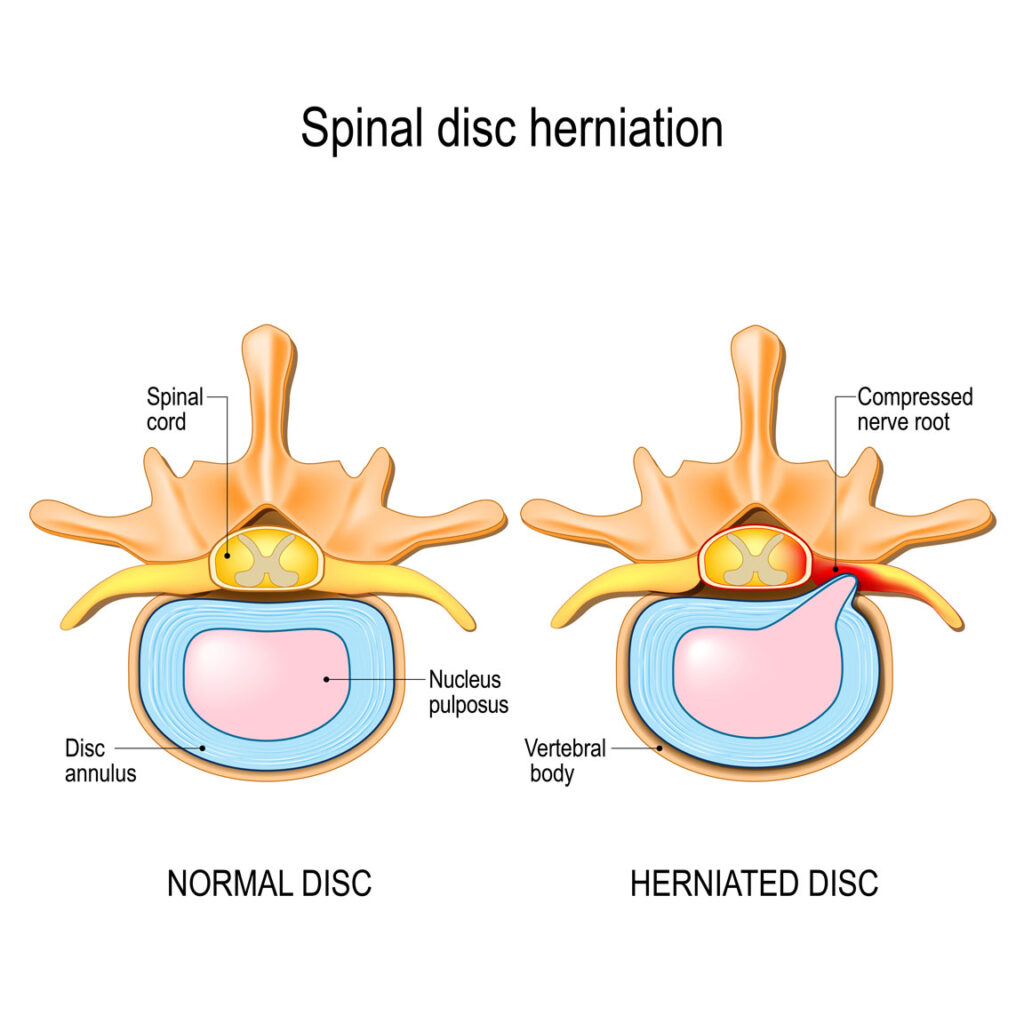During the cold winter months, ice often builds up on stoops, driveways, sidewalks, and other surfaces you may walk on frequently. And many times, the layer of ice is too thin to see, leaving you unaware of the potential danger these slippery surfaces present. Slipping and falling on ice can easily lead to a painful back injury. This article will provide you with common back problems caused by falling on ice, along with some methods to alleviate your back pain if you do happen to slip.
Common Back Injuries From Slipping and Falling on Ice
Several types of back injuries are commonly experienced after slipping and falling on an icy surface.
Herniated Disc
Your backbone, or spine, is made up of 26 bones called vertebrae. In between them are soft disks filled with a jelly-like substance. These disks cushion the vertebrae and keep them in place. As you age, the disks break down or degenerate. As they do, they lose their cushioning ability. This can lead to pain if the back is stressed.
A herniated disk is a disk that ruptures. This allows the jelly-like center of the disk to leak, irritating the nearby nerves.
Learn More: Relieve Pain from Herniated and Bulging Discs with Chiropractic Care

Cervical Sprain or Strain
Your cervical spine, or the region of your spinal cord located by your neck, is another area prone to injury from slipping and falling on ice. Depending on how you landed during the fall, you may experience a cervical sprain or a cervical strain. A cervical sprain occurs when the ligaments within your neck are overexerted. A cervical strain occurs when the muscles or tendons within your neck are overexerted. Cervical sprains are typically more severe and painful than cervical strains and may take a few months to heal fully. Chiropractic treatment can help reduce the time it takes for your neck injury to heal, alleviating your pain throughout the process.

Points To Remember About Sprains and Strains
- A sprain is an injury to a ligament (tissue that connects two or more bones at a joint). When a sprain happens, one or more ligaments is stretched or torn.
- A strain is an injury to a muscle or tendon (fibrous cords of tissue that connect muscle to bone). In a strain, a muscle or tendon is stretched or torn.
- Anyone can get a sprain or strain.
- The symptoms of a sprain include: pain, swelling, bruising, and not being able to use the joint.
- In addition to pain, the symptoms of a strain include: muscle spasms, swelling, cramping, and trouble moving.
- It is important to see a doctor if you have a painful sprain or strain. This helps you get the right treatments.
- The amount of time you need to fully heal after a sprain or strain depends on the person and the type of injury.
- If you try to return to normal activities or sports too soon, you may injure the area again.
–National Institute of Arthritis and Musculoskeletal and Skin Diseases
Learn More: Treating Neck and Back Pain With Chiropractic Therapy
Preventing Neck and Back Pain When Working From Home
Low Back Sprain or Strain
Your low back, also known as the lumbar region, may also be injured because of a fall on ice. As a result, you may experience acute, shorter-lasting low back pain. However, without the proper treatment, your injury may lead to chronic low back pain, so it is essential to schedule an appointment with a chiropractor as soon as possible.



